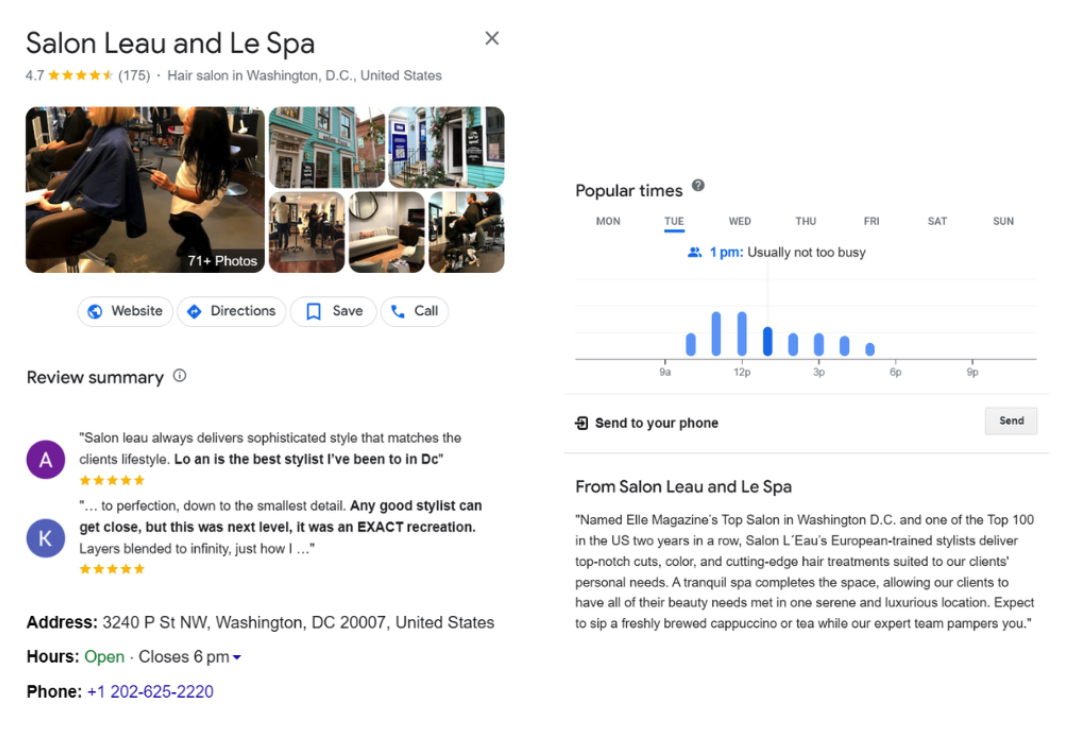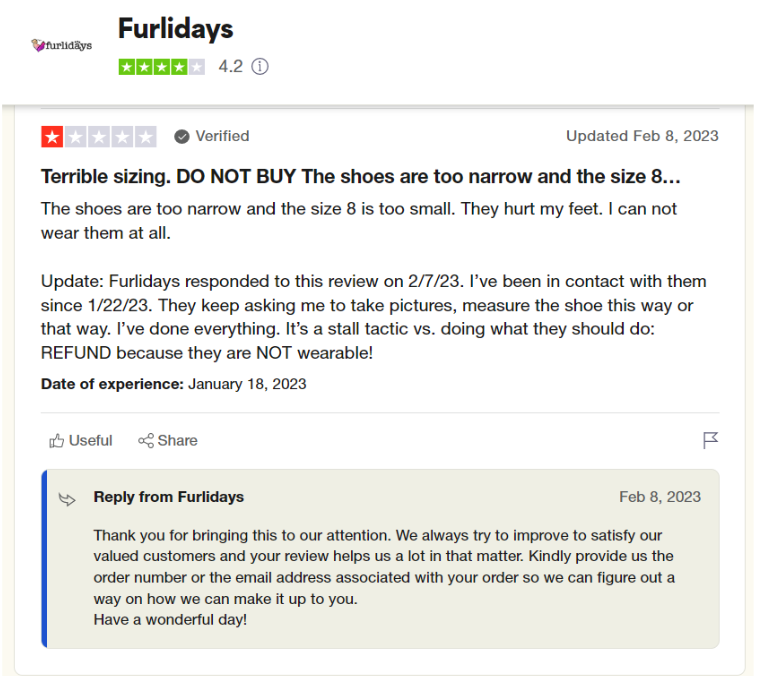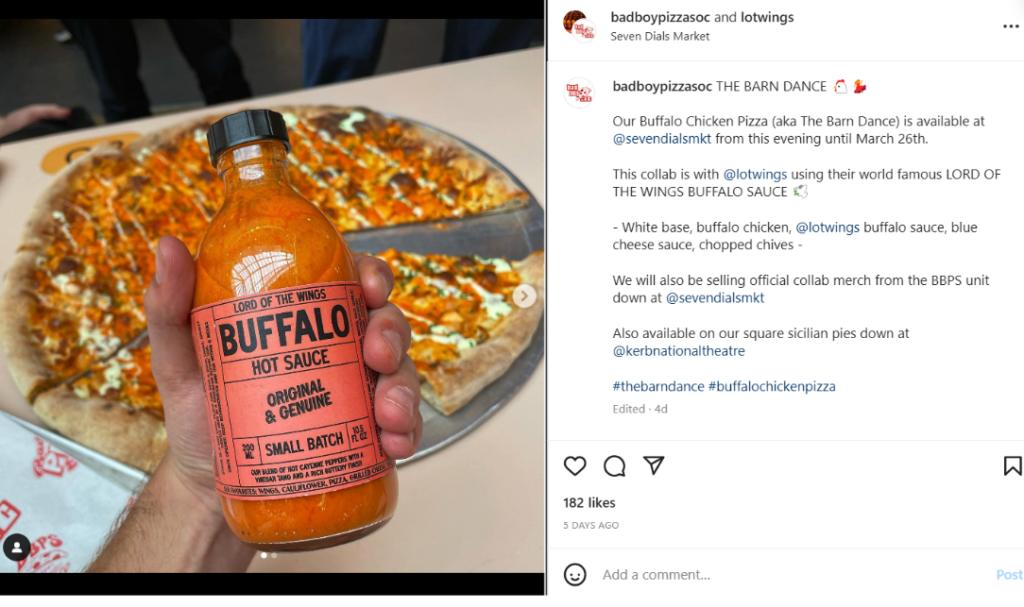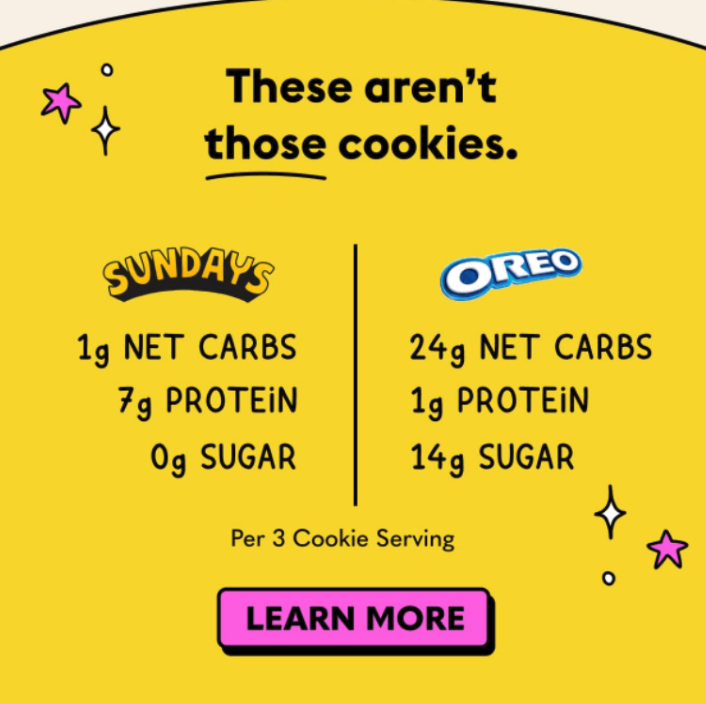The Ultimate Guide to Local Business Advertising: 14 Tips & Ideas
If you own a small business, you might feel like your marketing and advertising options are pretty limited. You probably don’t have a huge budget, so you must be mindful of where you invest your time, money, and resources.
To help you build a strong local presence and attract more customers, we’ve compiled a list of 14 proven free and paid local marketing and advertising ideas. You can incorporate a few of them into your marketing and advertising efforts to achieve the desired results.
7 Free Marketing & Advertising Ideas for Small Businesses
Maybe it’s your first time marketing or advertising your business and you’re hesitant to invest precious dollars into a growth tactic you don’t know much about. What if things don’t turn out as you expected? Or what if you end up wasting all of your money? It’s okay to feel this way.
We’ve put together a list of seven marketing and advertising ideas to help your small business grow without requiring you to break the bank:
1. Create and Optimize your Google Business Profile
49% of online shoppers start their buying journey on a search engine.
As the world’s largest search engine, Google can unlock multiple opportunities if you have an optimized and active business profile.
Think of your Google Business profile as a virtual business card. It shows up when people search for businesses like yours and builds credibility for your business. For example, if you run an Indian restaurant in Florida and someone searches for “indian restaurants florida,” then your Google Business Profile may show up.
Follow these steps to create and optimize your Google Business profile:
- Set up your Google Business profile and fill in all the necessary details, like address, contact information, hours, and website
- Populate your profile with more details, like the “From the business” description and a catalog of your products or services.
- Add authentic and well-shot photos/videos of your business and answer some common questions asked by customers.
- Choose the right category that aligns with your business’s positioning—for example, if you run an Asian cuisine restaurant, choose “Asian restaurant” instead of just restaurant.
- Post relevant information in your profile, like the latest discounts or new product launches, to secure higher rankings.
Here’s what an optimized GMB profile looks like:

2. Reach Out to Customers to Get Reviews
Customers are increasingly reliant on other people’s reviews to make purchase decisions. This is even more critical for small businesses since 98% of people read online reviews before buying from a local business.
If you’re not asking or encouraging new customers to share a review, you’re leaving money on the table. Here are a few actionable tips to get more positive reviews and create positive word-of-mouth marketing:
- Send every customer a standout and personalized request to write a review.
- Set up an automated workflow to request and remind buyers to review their purchase.
- Communicate the importance of every customer review and explain the impact a single review can create.
Here’s a review request template you can steal:
Hi [CUSTOMER NAME]! We hope you enjoyed [PRODUCT/SERVICE] from [BUSINESS NAME]. Your honest review helps our local business more than you know. We’d be so grateful if you’d take the time to let us know about your experience. It only takes a minute! Click here to leave us a review: [LINK].
3. Effectively Respond to Online Reviews
Responding to online reviews is a major green flag for potential customers. By responding to positive reviews, you make customers feel heard and improve engagement. They’ll be more likely to make a repeat purchase.
Here’s a simple yet effective response by Barkley Square:

On the flip side, there’s always a chance of getting poor reviews. The good news is, you can turn these bad reviews into positive opportunities and highlight your brand values by responding to these reviews well. Responding to negative reviews is where you can humanize your brand and appeal to frustrated customers. An empathetic response will also put you in a good light before potential customers read terrible reviews.
Here’s how Furlidays responded to an angry customer:

Remember these best practices for responding to reviews online:
- Be quick and timely with your responses
- Reiterate your business values and highlight what you stand for
- Take a personable and empathetic tone instead of using a generic template
- Apologize when necessary and politely address their concerns
4. Create and Verify Local Business Listings
One way to maximize visibility in the local market and reach the intended audience is to add your business listing to multiple platforms. These listings show up in local business directories, like Bing and Yelp, for “near me” keywords. Since these searches are primarily commercial, you can increase foot traffic through these listings.
Not sure how to create a business listing? These tips will come in handy:
- Add your registered business name without any additional words, like location or modifiers
- Include your phone number and business address, or mention that you’re a service-area business (that serves customers at their location)
- Write a compelling description highlighting your core value propositions and add your slogan
- Include images and link your website and social media to give visitors more information
5. Optimize Your Website
If you want a low-cost solution to market and advertise locally online, website optimization might be your best bet. An optimized website has many benefits. It can:
- Attract more potential buyers to your store
- Create a solid impression on new visitors
- Convert visitors into customers
- Boost your bottom line
So, what’s the secret to optimizing your website for local customers? Try these four tactics:
- Lean into your branding to create uniform and high-quality designs
- Let your copy do the talking for you and prioritize clarity over cleverness
- Design a clear and straightforward navigation flow to take visitors from one page to another
- Eliminate friction and give visitors a seamless experience with less clutter and more meaningful information on every page
The bottom line: Avoid overwhelming people with too much information or visual elements and focus on creating clarity with your design.
6. Update Title Tags and Make Them Search-Focused
Title tags are a part of the HTML code that shows the title of every page on search engine results, browser tabs, and social media shares. For search engines, they indicate the type of content within each page. For humans, they set expectations of what they’ll find inside these pages.
As one of the key ranking factors, title tags can determine your rankings for local searches. So, use these pro tips to make your title tags more attractive for Google searches:
- Aim for brevity and shorten your title tags to 60 characters or less.
- Make your tags appealing and unique by using emotion-driven phrases.
- Focus on one keyword instead of stuffing the title with multiple terms.
7. Partner with Other Local Businesses
Communities are the future of shopping. People want to hear about other customers’ experiences before making a buying decision. This is why you need to cultivate and engage a local community of your target audience.
Partnering with other businesses complementing your product/service can help you achieve this.
These strategic partnerships need zero investment to start. You can tap into each other’s audiences to get more buyers into your funnel and increase sales.
Here’s an Instagram post where a local pizza outlet collaborated with a chicken wing shop:

Wondering how to build partnerships with local businesses? Here are some tips:
- Research your local shops to find brands that align with your offering
- Host events or support a charity together to create a community impact
- Incentivize people to buy from you by offering coupons for co-branded sales
- Create a multi-brand market by bringing together multiple businesses in a partnership
Tapping into the opportunities of local partnerships will help you delight your customers.
That being said, let’s dive into a few paid local marketing and advertising ideas that you can incorporate into your marketing strategy.
7 Paid Local Marketing & Advertising Ideas for Small Businesses
Don’t be hesitant to invest money in marketing and advertising. The free marketing and advertising ideas we’ve mentioned in the above section will only get you so far. Here are a few paid local marketing and advertising ideas you can incorporate into your local marketing and advertising strategy.
1. Run and Optimize Google Ads Campaigns
Google Ads is the holy grail of local advertising.
But many small business owners shoot in the dark with their ad campaigns because they don’t have an airtight strategy.
Create yours with these search ads best practices:
- Define a local advertising budget before ad campaigns get underway.
- Conduct ample research to choose a specific target for each campaign.
- Create different types of PPC ads and measure your campaigns to understand what works best for you.
- Analyze your competitors to see what’s working for them and aim to one-up their ideas.
- Focus on your brand positioning and strike the right chord with your copy for pay-per-click ads.
2. Try Text and Email Marketing
People are often inundated with ads on social media and set strict rules to avoid irrelevant ads. Emails and text campaigns offer one of the most effective ways to market your business and meet your target audience where they are.
A personalized email marketing strategy can maximize engagement and add credibility to your name. It’s a great channel to nurture positive customer relationships. What’s more, a retargeting email campaign can also help increase conversion rates and boost revenue.
Here’s a snippet from Sundays Cookies email newsletter:

SMS marketing is another high-ROI digital marketing tactic for small businesses. Giving shoppers the convenience of opting in/out for messages and sharing regular updates about your business takes you closer to them. You can also conduct quick polls to get a pulse of your new customers and run automated campaigns effortlessly.
3. Host Local Events to Increase Interaction
Hosting events with your local community is another proven small business marketing strategy to build better customer relationships. Tap into the power of #ShopLocal and host events to engage your community. Here are a few fantastic community events you can host to reel in more shoppers:
- Giveaways
- Sale pop-ups
- Product sampling
- Shopping festivals
- Local competitions
- Educational workshops
Here’s an example of a brand that hosted a candle-making workshop:

4. Run Ads on Social Media Platforms
Social media advertising is gaining momentum among small businesses—70% invest in such campaigns actively.
When done right, social media ads can have game-changing benefits for your business, including but not limited to:
- More visibility when people are looking to buy.
- Cost-effective lead generation and conversions.
- Stronger brand awareness and increased website traffic.
- Lead nurturing through personalized retargeting ads.
5. Partner with Local Influencers
A global giant like Coca-Cola partnered with local influencers to launch its new flavor in Denmark. The results show the campaign’s success, with over 7.5% engagement rate and 750k impressions. That’s the impact of local influencer marketing.

Borrow these influencers’ authority to enhance your return on ad spend (ROAS) value and establish a more authentic brand image. Remember to hire brand-fit influencers that justify your brand values and target the right audience.
Once you’ve selected your ideal candidates, make a creative brief to guide them about the deliverables and educate them about your brand. Set clear expectations and communicate the quality benchmarks you want to follow.
6. Rank Organically with Local SEO
Optimizing your page for local SEO means more visibility before shoppers who are eager to buy your products/services. We’ve sourced the most effective ways to ace your local SEO game and gain this precious real estate on search engines here:
- Make your messaging fail-proof and produce value-packed, enticing content.
- Add and update your listings to maximize website traffic for your site.
- Build links by collaborating with other businesses and improving your domain authority.
- Fix any technical errors to ensure search engines can easily crawl and index your site.
Customer reviews and Google profiles are also crucial factors in local SEO. Bring your A-game with these tactics to bag all the top rankings in local searches.
7. Run Local Newspaper Ads
While small business owners often overlook print media, newspaper ads can be a great medium to reach older generations. If your ads are unique and catchy enough, you might even go viral on social media and earn more views.
Follow a clear messaging framework and speak directly to your buyers’ pain points. Create an enticing design to paint a picture of the promised land—show how you can resolve these challenges. Use the show-don’t-tell idea to communicate your unique benefits and highlight the prominent use cases.
Here’s an example of Lifeproof’s print ad about its waterproof phone case:

How to Grow Your Business
If you want to crack the code for local business advertising to grow your small business, start with your customers. Set a solid first impression as soon as they land on your website and translate their positive experience into reviews. With Podium, both of these objectives are a cakewalk.
Use Webchat to start meaningful conversations with potential customers and turn your website into a lead-generation machine. Podium also helps you collect and manage customer reviews to build more social proof for your business.
When it comes to small business advertising and growth, consider Podium your secret weapon. We help you deliver your message with the right intent and tonality through multiple avenues. Start a free trial and witness the power of Podium for yourself today.
Frequently Asked Questions (FAQs)
How can I promote my business locally?
You can promote your business locally by following these marketing tips:
- Know your target audience
- Get the timing right
- Advertise where your audience is
- Track and measure your campaigns
- Be willing to reframe your strategies
What are the three types of local advertising?
Here are the three types of local advertising:
- Product advertising: to promote a specific product/service
- Classified advertising: to publish ads in newspapers or print publications
- Institutional advertising: to promote all the offerings of your business
Where do local businesses advertise?
Local businesses can advertise through these tactics:
- Google Ads
- Text or email marketing
- Hosting local events
- Social media ads
- Influencer content
- Local SEO
- Newspaper ads
Keep reading
Get started today
Ready to grow? Scale your business with an AI-powered lead conversion platform.
















